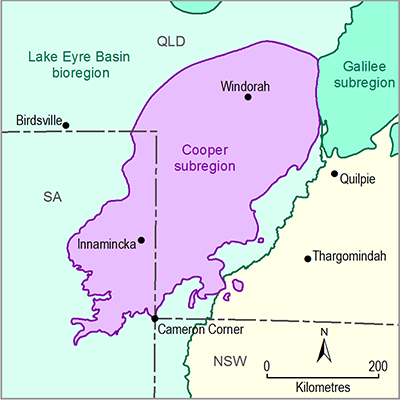Summary
Surface water quality in the Cooper subregion is monitored under the Surface Water Ambient Network (SWAN) monitoring programme by the Queensland Government, SA Environmental Protection Authority (EPA) and the Lake Eyre Basin Rivers Assessment (LEBRA) programme under the Lake Eyre Basin intergovernmental agreement between Commonwealth, Queensland, SA and NT governments. The water quality indicators included in this product are electrical conductivity (EC), total nitrogen (TN), total phosphorous (TP) and turbidity. The EC values in the Cooper creek basin are generally close to the water quality objective trigger value but TN, TP and turbidity are generally high. However, as the data period and spatial distribution are limited it is difficult to draw conclusions based on the available water quality data. It is also important to note that trigger values could differ locally from a regional value.
Groundwater quality in the Cooper subregion is not widely monitored. Some Great Artesian Basin (GAB) monitoring bores are located in the subregion, and some other bores and petroleum wells have associated groundwater quality data. This product summarises groundwater quality for two areas within the Cooper subregion. The first is an area in the central part of the subregion, in Queensland, and the second is the southern Cooper Basin margin, where coal seam gas development is most likely to occur. Groundwater quality is discussed in terms of salinity (total dissolved solids or TDS) and some other hydrogeochemical parameters. TDS varies across the subregion, ranging from 1000 to 21,000 mg/L. Fresher water occurs in GAB aquifers and the Patchawarra Formation in the southern Cooper Basin. Water chemistry is similar in the near surface Cenozoic aquifers and upper GAB aquifers, and differs from lower GAB aquifers. Groundwater is generally soft to moderately hard, suitable for stock watering and not suitable for irrigation.

